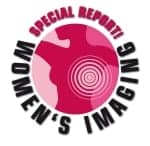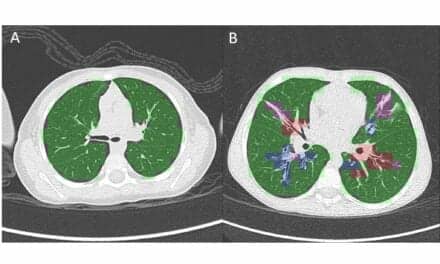New HHS regulations could motivate more women to go for mammography screening, but multiple barriers still remain.

It might be easy to blame the statistical decline of mammograms on the guidelines issued by the United States Preventive Services Task Force (USPSTF) in November 2009, which challenged the widely accepted recommendation that women, starting in their 40s, get routine mammogram testing. The guidelines suggested that women refrain from getting mammograms until age 50, and then continue every 2 years after that. Even the Centers for Disease Control and Prevention (CDC) challenged its own published guidelines, although still acknowledging, “Early detection is important for a successful outcome and mammography is the best way to diagnose the disease early.”
The news shocked the imaging community and traumatized women concerned with their health care and well-being. Preventive testing, they were being told, was no longer under the widely accepted 2002 guidelines, which recommended annual mammography screenings. Randy Hicks, MD, MBA, president of Regional Medical Imaging, noted, “Imaging significantly dropped off in the first and second quarters of 2010, perhaps due to the confusion in the marketplace that was created by the news.”

Randy Hicks, MD, MBA
However, there seem to be other factors also in play. Reports have shown that the screening rate for breast cancer in general has dropped from 77% in 2002 to around 70% currently. Michigan, where Hicks works, has the second highest unemployment rate in the nation, and the percentages of uninsured adults grew from 15.7% in 2008 to 18.7% in 2009.
Recently, recommendations have changed yet again. In July 2010, the Department of Health and Human Services (HHS) issued regulations requiring new private health plans to cover evidence-based preventive services, which includes mammography screening for women 40 and older. This will eliminate cost sharing requirements for such services. This means new health plans beginning on or after September 23, 2010, must cover preventive services that have strong scientific evidence of their health benefits, and those plans may no longer charge a patient a co-payment, coinsurance, or deductible for these services when a network provider delivers them. The announcement uses the 2002 guidelines that recommend mammogram screenings begin at age 40.
With mixed messages just months apart, it is no wonder “to go or not to go?” is the question many women are asking themselves. As for the imaging community, here are the critical questions now: Is the new HHS regulation welcome news for women and for breast examiners, and will it signal a positive change in direction in the percentages of women getting breast exams? Will this change the landscape for imaging providers and women’s health care?
Hicks noted, “There are those women who come in the door systematically, and they will continue to do so. We hope the new HHS guidelines will promote more engagement from those who aren’t coming in the door. Mammography is a cost-sensitive exam. There is the initial cost, co-pay, and perhaps additional costs of an ultrasound or biopsy.” (Currently, MRI and breast ultrasound are considered additional tools to mammography.) The new guidelines may be “especially significant in the hard-hit high unemployment areas [for women] who do have co-pays and deductibles to meet.” Even without the new guidelines, Hicks noted that there has been an increase of mammograms over the last 3 months. The additional incentive of no co-pays might be the enticement to get women over the hump of getting an exam, and getting women in to get an exam is a good thing. “In breast cancer, as mammography has increased in sensitivity, rates of survival have improved. Capturing the disease early saves more and more lives.”

Rose Heller-Savoy, MD
“Current evidence supporting mammograms is even stronger than in the past,” the American Cancer Society stated. “In particular, recent evidence has confirmed that mammograms offer substantial benefits for women in their 40s.” It has been shown that regular mammography screenings have decreased the breast cancer mortality rate in the United States by 30% since 1990.
The CDC suggested that the Patient Protection and Affordability Act “should remove the financial barrier to mammography screening by expanding coverage and eliminating cost sharing; however, barriers remain.” Lack of health insurance for millions of Americans remains a pressing problem. Also, there is a surprising lack of education among women as to the benefits of mammograms.
Rose Heller-Savoy, MD, director of mammography services, Montclair Breast Center in New Jersey, stated, “I think it is great that the regulations have changed and now co-pays and deductibles are covered, but for the majority of women, the decision to have mammography is not financially driven.” A high deductible, depending on the economic area, might play a more significant role in getting a mammogram, but she believes that a co-pay was never the obstacle to mammograms. Women with no health insurance aren’t getting mammograms even though there are facilities that offer free screenings. “I wish it were a financial reason, it would be an easier problem to solve.”
Why Do Women Skip Their Mammograms?

- Negative experience. These are the women who have had a negative first experience and never go again. Perhaps the procedure hurt them, perhaps they felt they were not respected, or were used to having someone speak to them directly rather than receiving the information through a phone call. They may have been stressed out by a false positive.
According to Heller-Savoy, “The negative experience population is huge. A mammogram is not a particularly comfortable experience. Many women feel very vulnerable in the large waiting rooms of screening centers, especially since they typically leave without any results and without seeing a physician. This is unlike any other medical encounter that a patient has. This group is filled with women individually having had a negative experience, as well as having their friends sharing with them the negative experience.” But Heller-Savoy finds that the negative experience group can be addressed and changed. Her center is a patient-oriented facility that gives women a true medical experience. One of the key components is that the patients have someone to talk with and to discuss their screening.
- Denial. There are those who never go at all. There is the belief that nothing can happen to me, a feeling of immunity from cancer, especially if the belief is based on family history. However, “70% to 80% of women who get diagnosed with cancer have no family history of breast cancer,” noted Heller-Savoy.
- Radiation risk. There is so much negative press about radiation risk. “The risk being discussed in the lay press is really related to CT scans, and not mammograms,” noted Heller-Savoy. “There is a need to have a discussion on how low the level of radiation really is. CT radiation is not at all like a mammogram, which is generally considered to be equivalent to living in the world with its normal background radiation for 2 months. Many women just want to get an ultrasound screening in order to avoid radiation and have to be convinced that the benefits of a mammogram far outweigh the risks.”
- No insurance at all. The economy/recession. “During tough economic times, people want to conserve in any way, which plays a role in all medical usage,” Heller-Savoy observed. The American Cancer Society documented that uninsured women are more likely to be diagnosed with advanced stage breast cancer than their insured peers.
- Women in general are the caregivers. Often, for women, the last people they take care of or pay attention to is them. Over and over again, Heller-Savoy hears the excuses, “I needed to take care of my mother, work was very busy, my children were sick,” when asked why they missed their exam the previous year. Heller-Savoy during her public awareness/outreach programs gives this response: “It would be much more disruptive to your schedule to have late stage cancer.”
For women who were ambivalent about mammograms, the November 2009 guidelines were a perfect excuse not to go. Many referring physicians also agreed, and were not giving prescriptions to patients for mammograms. “Mammography screenings do not always require a prescription, and women typically can still go as self-referred patients,” noted Heller-Savoy. “Approximately 90% of our patients who come on a yearly basis have their breast cancers detected at stage 0 or 1, which is usually curable. A woman wants her cancer found long before it can be felt. It’s not a perfect test. But going to the right place with breast imaging specialists, using ultrasound screening in addition if needed, significantly increases your chances of finding breast cancer at its earliest point.”
Many imagers were not aware of the new HHS regulations, in contrast to everyone knowing almost immediately about the November 2009 announcement. The news flooded the press. “It has the power to undo 20 years of improvements in survival rates of breast cancer. How sad to me that women are actually believing it,” said Heller-Savoy. She hopes the new HHS regulations will bring women back to mammography.
Ultimately, Hicks believes the new guidelines are good both for women and for breast imagers. As soon as they heard the news, Hicks and his colleagues discussed ways to use the new information as part of their Breast Awareness Month promotions. Through talk shows and radio shows, they hope to inform women who have fallen off with the health care industry and suggest that they look into getting preventive services, asking about the new program guidelines for mammography when they do. “I applaud HHS in applying well care to regular exams, leading to early detection, which is much better than waiting. Clearing up confusion, and having a national voice in support of well-being, will help find the disease in advance. I think it’s great.”
However, if breast imagers are only slowly becoming aware of the new guidelines, how many of the general public are aware of them? In order for the new HHS regulations to change the mammography landscape, the public health initiative needs public awareness.
J.L. Silverman is a contributing writer for Axis Imaging News.






